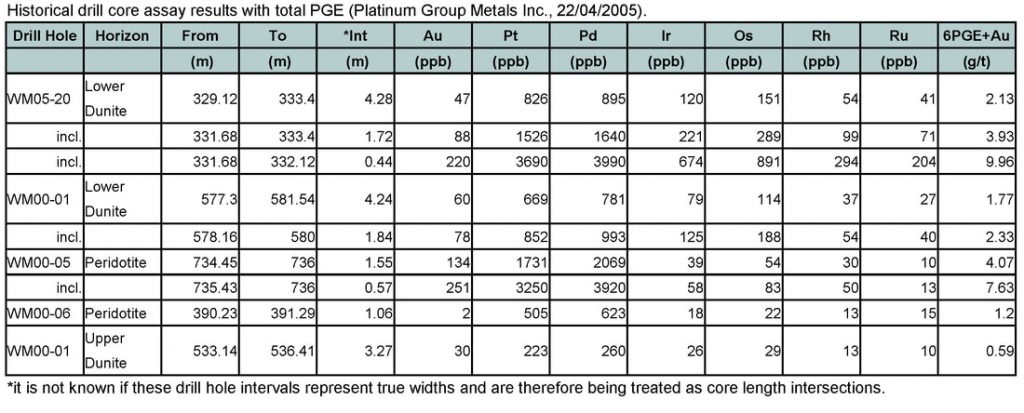
Seagull Lake Property
Pt-Pd-Cu-Ni
Property Location and Access
- Located ~90 km north of the port city of Thunder Bay, Ontario, 45 km south of Impala Canada’s Lac des Iles PGE-Cu-Ni mine, and 25 km north of Clean Air Metals’ Thunder Bay North PGE Property.
- Excellent infrastructure, with paved and gravel roads, natural gas pipeline and power lines in the area.
- Large land position comprising 357 single cell mining claims totalling 10411 hectares.
Geology
The Seagull Lake Intrusion (“SLI”) is described as being a 10 km diameter, circular intrusive composed of ultramafic rocks with a high olivine content that has been derived from a deep mantle source. Layering and multiple phases of intrusion have been recognized which creates a favourable setting for Noril’sk Type sulphide accumulation. The SLI is located in the Nipigon Plate, which is interpreted to represent the failed third arm of a Proterozoic-aged, mid-continent rift system, the bulk of which lies beneath Lake Superior to the south. The Nipigon Plate area has been compared to the Noril’sk Region of Siberia, Russia, and is considered to be highly prospective for the discovery of new Cu-Ni-PGE deposits. Known platinum group element-copper-nickel (“PGE-Cu-Ni”) zones in the intrusion support the interpretation that Proterozoic ultramafic intrusions in this area of the Nipigon Plate have undergone magmatic processes that are capable of producing large PGE-Cu-Ni sulphide deposits (see Company news release dated March 12, 2019).
Three styles of PGE mineralization have been identified in the SLI: (1) near surface, PGE-rich detrital “black sands”; (2) magnetite associated, PGE-rich layers or “reef-type”; and, (3) sulphide associated, basal Cu-Ni-PGE mineralization, interpreted as “Noril’sk-type”. Although the detrital and reef-type mineralization was the first style known in the SLI, the discovery of Noril’sk-type Cu-Ni-PGE sulphide mineralization became the focus for subsequent exploration programs, which reported from diamond drilling 3.6 g/t Pt+Pd, 0.34% Cu and 0.21% Ni over 2.1 metres and 1.04 g/t Pt+Pd, 0.14% Cu and 0.16% Ni over 16.0 metres (from Pettigrew, 2002). The possibility for the discovery of other styles of sulphide mineralization remains including Contact-type deposits (e.g., Lac Des Iles Mine and River Valley deposits, Ontario) and structurally hosted high-grade concentrations along regional fault systems.
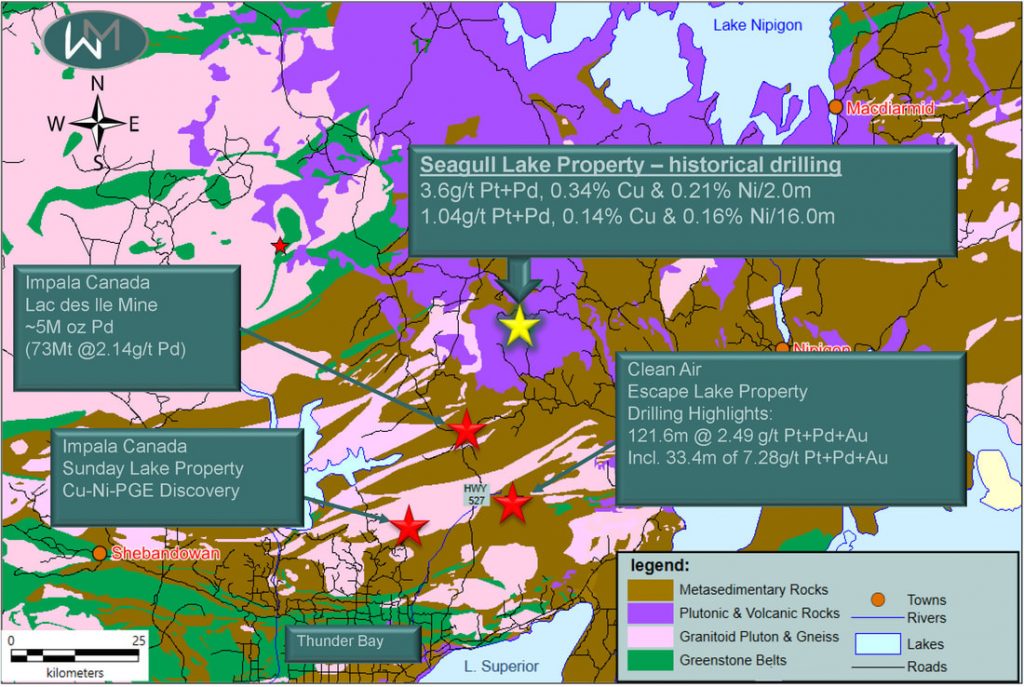
- Seagull Lake Property is 45 km south of Impala Canada’s Lac des Iles PGE-Cu-Ni mine.
- 25 km north of Clean Air Metals’ Thunder Bay North PGE Property.
- Impala Canada recently purchased ($1.0 billion) North American Palladium’s Lac des Ile Mine, Canada’s only primary PGE mine.
- Benton Resources (TSXV:BEX) and Clean Air Metals recently purchased the Current Lake Deposit (M&I Mineral Resource: 9.83 Mt of 2.34 g/t Pt-Eq for 741,000 Pt-Eq ounces) and
- Escape Lake Deposit (drill intercept of 33.0 m of 7.28 g/t PGE, 2.28% Cu+Ni).
- New high-grade discoveries by Rio Tinto at Escape Lake and Impala Canada at Sunday Lake Property show the tremendous potential of the Thunder Bay North region:
- Sunday Lake: 35.8 m of 4.5 g/t Pt+Pd+Au (“3E”) and 41.2 m of 3.22 g/t Pt, 2.08 g/t Pd, 0.21 g/t Au.
1. It is not known if these drill hole intervals represent true widths and are therefore being treated as core length intersections.
2. A Qualified Person has not done sufficient work to verify the historical drill core sampling and reported drill core intercepts reported herein.
Seagull Lake pGE Property, Ontario
The Seagull PGE Property (“Seagull”) consists of 349 single cell mining claims, totalling 7,370 hectares. The Company is earning a 100% interest in the property and all claims are current and in good standing.
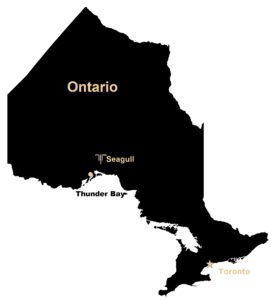
Location and access
The 100% owned Seagull PGE property (“Seagull”), (7370 ha), is centered at approximately 49º 00’ 54’’ N Latitude; 88º 57’ 12’’ W Longitude (UTM Coordinates 357170E; 5430950N (Zone 16N NAD83 Datum).
Located ~90 km north of the port city of Thunder Bay, Ontario, 45 km south of Impala Canada’s Lac des Iles PGE-Cu-Ni mine, and 25 km north of Clean Air Metals’ Thunder Bay North PGE Property
Regional and local Geology.
The Seagull property is located north of Lake Superior within Mesoproterozoic rocks of the Southern Province of the Canadian Shield. The Mesoproterozoic rocks, which overlie the Archean Superior Province, extend from north of Lake Superior for approximately 160 kilometres. The older or lower Mesoproterozoic rocks, which include granitic and felsic fragmental units and Sibley Group sediments, are either overlain by relatively younger volcanic-sedimentary rocks or have been intruded by mafic to ultramafic hypabyssal intrusive rocks of Keweenawan Supergroup of MR.
The Seagull Pluton located in the Nipigon Plate is a 10 km diameter circular intrusive that is composed of ultramafic rocks with a high olivine content, interpreted to having been derived from a deep mantle source.
Mineralogy
Mineralogy
The PGE (Pt+Pd) and Ni-Cu-Au mineralization, occur within strongly to moderately magnetic black sand which occurred from intense weathered ultramafic intrusive rocks (peridotite). The sulphide minerals, up to 1% include pentlandite, chalcopyrite, pyrrhotite and heazlewoodite with minor accessory minerals including galena, sphalerite and argentite.
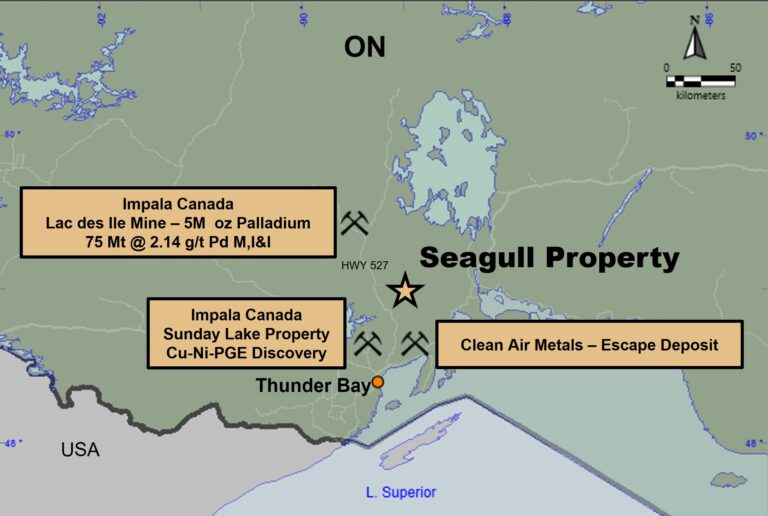
Figure 1: Ontario location map with Seagull Property and nearby mine and PGE deposits
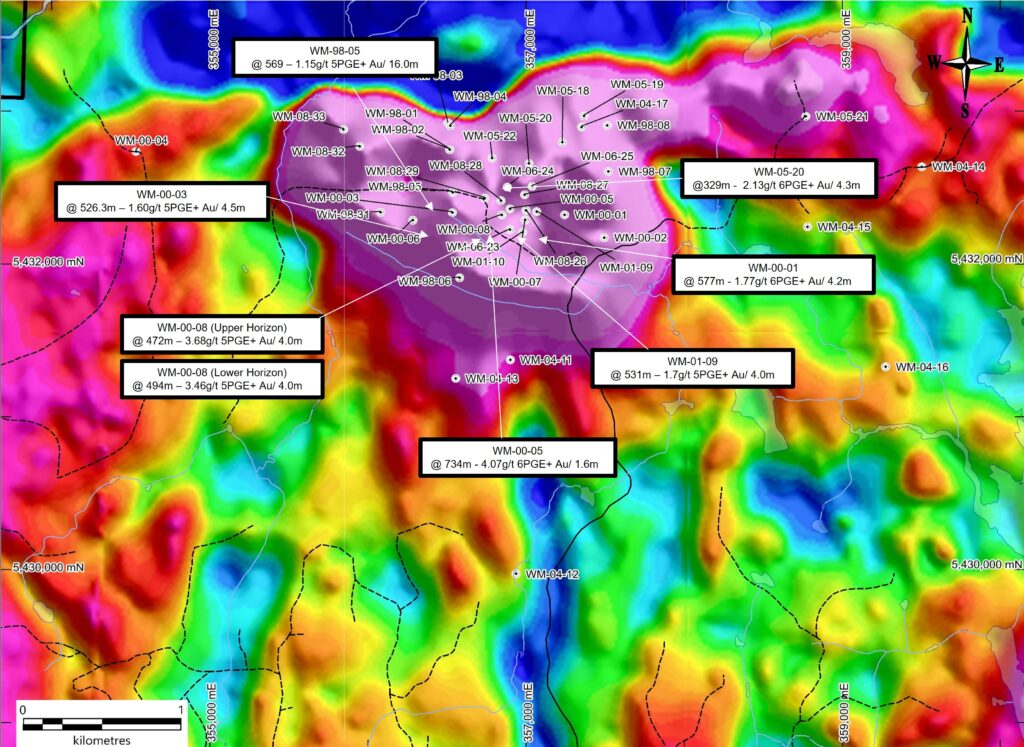
Figure 2: Airborne Geophysics – Magnetics and historic drilling with highlighted assay intervals.

Figure 3: Infrastructure and port city of Thunder Bay.

